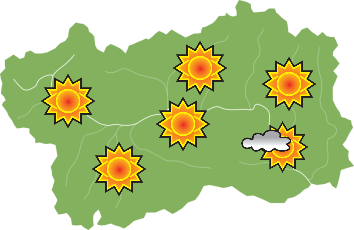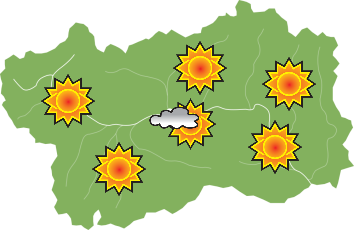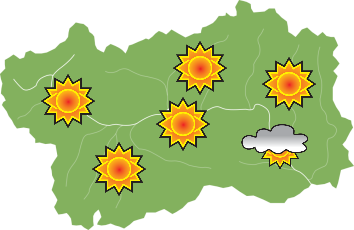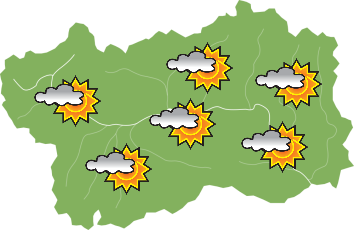Walk from La Salle to Derby
Località: La Salle
For the opening time and tips on how to visit the places indicated, please consult the corresponding links
How: by foot, bike or car.
Duration: around 4 hours and 30 minutes (by foot until Derby, excluding the return bus journey).
When: from May until the beginning of November.
Distance: about 5 km.
Derby: a hamlet which usually risks to be unnoticed, but which contains unexpected historical treasures, examples of the shining Middle Ages.
Park under Maison Gerbollier or, even better, take the scheduled coach until La Salle, the provincial capital, so that you can take another bus to return directly to Derby.
From the parish church of La Salle, take the road that leaves the hamlet to the east; pass the cemetery and the nearby stream to arrive in Echarlod ( fortified house of Aragon ). Leaving the village, turn towards the valley on a scenic road, passing through meadows, to the village of Villair from which, by taking a left towards the town of Cré, you come to the SS 26 trunk road to cross in the direction of Derby, a seemingly secondary and uninteresting town, but which instead has a long story to tell, having been the domain of both the cannons of the Cathedral and Sant’Orso in the medieval and late medieval age.
Today nestled in the territory of the municipality of La Salle, in the past Derby was also independent from an administrative point of view (it had its own major) and exercised its spiritual jurisdiction, as well as over the area of Envers, also over the three Adret villages (Villaret, Les Champs and Equilivaz), which were then under the administration of La Salle. In 1782, a measure of the Royale Délégation was to resolve the inevitable complications in the management of the temporal and religious affairs, establishing the definitive union of the two territories into a single municipality.
The known history of Derby starts in 1040, the year in which Umberto Biancamano, founder of the Savoy and lord of Valdigne, donated two thirds of the jurisdiction over this territory to the Cathedral Chapter and a third to the Sant’Orso Chapter of Aosta. The name Delbia appears for the first time in the documents relating to this donation.
Once past the Dora, the first noteworthy building is the parish church of Sant’Orso (XI-XII), distinguished by a especially slender and pointed bell tower (XIII).
Proceeding along the main road, on the right, slightly set back from the road, there is the Judicial Castle (XIV-XV); near the road, there is still a part of the original wall with two circular corner towers and an embrasure can also be seen above the entrance. The name of the castle derives from the large basement which for a certain period, was used as a prison; also peculiar is the winding masonry chimney placed on the north wall of the building at a later time.
The route then leads to the middle of the hamlet, where another impressive complex can be noted, the Notary Castle, the likely residence of the Lachenal notaries, whose presence was attested in Derby and throughout Valdigne between the 13th and 16th century. Peculiar are its beautiful large windows with ‘lancet’ architraves. Annexed to the building there is the collective oven.
By continuing to explore the medieval Derby, you will chance upon the so-called Tower of Justice or the ‘prison tower’ (XV-XVI), a quadrangular building with a facade of late-gothic style windows. It is recommended to go up to the monumental chestnut tree and then turn back towards the dirt road in the meadows which line the small cemetery.










